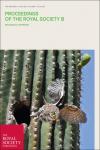Effects of local and landscape factors on distributional dynamics: A species-centered fitness-based approach.
In spatially structured populations, distributional dynamics are driven by the quantity, connectivity and quality of habitat. Because these drivers are rarely measured directly and simultaneously at relevant scales, information on their relative importance remains unclear. I assessed the influence of both direct and indirect measures of local habitat quality, and of landscape habitat amount and connectivity on long-term territory occupancy dynamics of non-migratory pygmy owls. Direct measures of local habitat quality based on territory-specific reproductive output had greater effects on distribution than landscape factors, but only when spatio-temporal fluxes in performance linked to environmental stochasticity and intraspecific competition were considered. When habitat quality was measured indirectly based on habitat structure, however, landscape factors had greater effects. Although all landscape factors were important, measures of landscape connectivity that were uncorrelated with habitat amount and based on attributes of matrix structure and habitat configuration that influence dispersal movements had greater effects than habitat effective area (amount weighted by quality). Moreover, the influence of connectivity (but not habitat effective area) depended on local habitat quality. Such results suggest the relative importance of local habitat quality in driving distribution has been underestimated and that conservation strategies should vary spatially depending on both local and landscape contexts.

